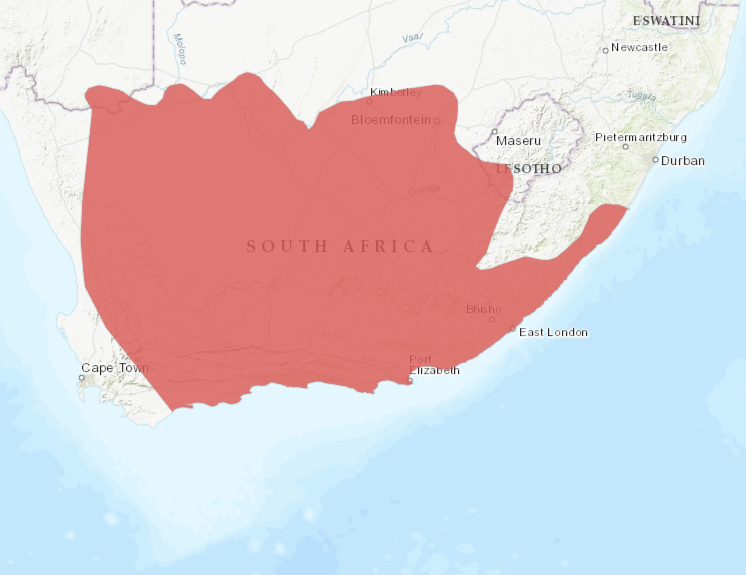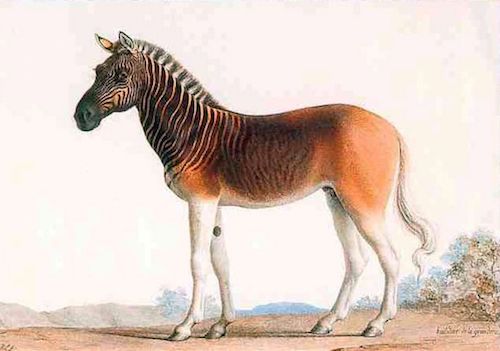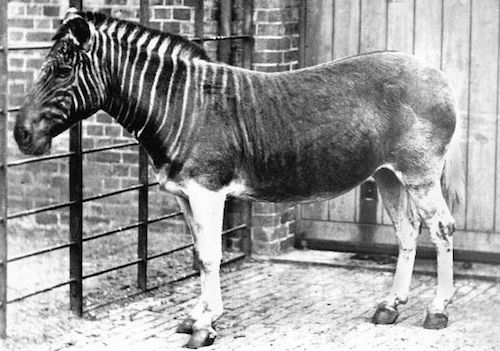Quagga
 The most significant thing about the quagga may have been its disappearance, because at first there were so many of them. Their numbers featured prominently in early descriptions. For example, in his History of Quadrupeds the eighteenth-century naturalist Thomas Pennant noted that, like common zebras, whom they closely resembled, quaggas lived in vast herds. He carefully distinguished the two kinds, however: physically, quaggas were stockier and more modestly striped; and morally, quaggas were braver, inclined fearlessly to attack marauding hyenas, and at the same time more docile and tamable, as if designed by nature as "the beast of draft or of burden" for southern Africa. A century later, however, the analogous entry in The Royal Natural History regretfully described these vast quagga populations in the past tense, explaining that although the herds had still been characterized as "immense" in the 1830s, over the intervening decades they had "been completely or very nearly exterminated."
The most significant thing about the quagga may have been its disappearance, because at first there were so many of them. Their numbers featured prominently in early descriptions. For example, in his History of Quadrupeds the eighteenth-century naturalist Thomas Pennant noted that, like common zebras, whom they closely resembled, quaggas lived in vast herds. He carefully distinguished the two kinds, however: physically, quaggas were stockier and more modestly striped; and morally, quaggas were braver, inclined fearlessly to attack marauding hyenas, and at the same time more docile and tamable, as if designed by nature as "the beast of draft or of burden" for southern Africa. A century later, however, the analogous entry in The Royal Natural History regretfully described these vast quagga populations in the past tense, explaining that although the herds had still been characterized as "immense" in the 1830s, over the intervening decades they had "been completely or very nearly exterminated."
As it turned out, even this gloomy accounting was optimistic. It is, of course, difficult to pinpoint the demise of the final members of a diminishing species, but subsequent consensus has put the extinction of free-living quaggas in the 1870s. Over the years, a small stream of quaggas had trickled into European private menageries and public zoos; the last captive quagga died in Amsterdam in 1883. The reasons for the quagga's disappearance were not obscure. They had not been prized as game animals or trophies, so colonial sportsmen could not be blamed. Instead, the quagga had succumbed to a combination of economic pressures. For several centuries, farmers in the Cape region had hunted them to provide food for African farm laborers. As settler agriculture expanded into quagga habitat, they were eliminated as unwelcome competitors with domestic livestock. In addition, during the nineteenth century a commercial market developed for their hides. For some time, despite these multi-pronged assaults, quagga herds apparently remained vast. Then suddenly, or so it seemed, they were gone.
 |
 |
What made the likely (and, soon afterwards, certain) extinction of the quagga particularly troublesome was the juxtaposition of rapid decline with large population, especially as it became clear that this alarming trajectory was not unique; in North America at about the same period, the vast numbers of bison and the passenger pigeons suffered similarly precipitous diminution.
| « British Red Squirrel | American Bison » |
